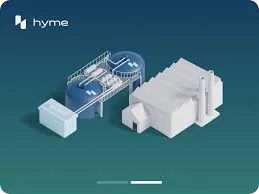boiler for textile printing manufacturer
The Role of Boilers in Textile Printing Manufacturing
In the textile printing industry, efficiency and reliability are paramount. One of the unsung heroes in this process is the boiler system that provides the necessary steam and hot water for various applications. Boilers play a critical role in textile printing, ensuring that operations run smoothly, materials are treated properly, and finished products meet quality standards. This article delves into the significance of boilers for textile printing manufacturers, discussing their types, applications, and the benefits they bring to the industry.
Understanding Boiler Types
Boilers used in textile printing can be classified into several types, depending on their design, fuel type, and intended application. The most commonly used boilers in the textile sector are
1. Fire-Tube Boilers These are designed with the combustion gases traveling through tubes surrounded by water. Fire-tube boilers are known for their simplicity and ease of maintenance, making them suitable for smaller operations or facilities where space is limited.
2. Water-Tube Boilers In contrast to fire-tube boilers, water-tube designs circulate water through tubes placed in the hot gases produced by combustion. These boilers are capable of producing steam at higher pressures and are ideal for larger textile facilities that require substantial steam output for processes like dyeing and finishing.
3. Electric Boilers As the name suggests, electric boilers convert electrical energy into steam or hot water. These systems are gaining popularity due to their compact size, efficiency, and reduced emissions. They are particularly suitable for operations in urban areas where space is a premium and environmental regulations are stringent.
4. Biomass Boilers With increasing environmental consciousness, many textile manufacturers are turning to biomass boilers that utilize organic materials as fuel. These systems are not only eco-friendly but often more economical in the long run, especially for companies looking to reduce their carbon footprint.
Applications of Boilers in Textile Printing
Boilers in textile printing serve multiple functions
- Dyeing Steam from boilers is essential for the dyeing process. It helps in the fixation of dyes on fabrics, ensuring that the colors are vivid and long-lasting. The temperature and pressure of the steam must be carefully controlled to achieve desirable results.
- Finishing After dyeing, textiles often undergo finishing treatments to enhance characteristics like texture, durability, and appearance
. Boilers supply the necessary heat for processes such as setting, steaming, and calendaring, which are critical for achieving high-quality finishes.boiler for textile printing manufacturer

- Cleaning Boilers also play a role in cleaning operations within the manufacturing process. High-temperature steam helps to remove impurities and contaminants from fabrics, ensuring that they meet quality standards before they proceed to the next stage of production.
- Heating Apart from steam production, hot water from boilers is used for heating purposes throughout the facility, including maintaining optimal temperatures in dyeing and finishing machines.
Benefits of Efficient Boiler Systems
An efficient boiler system offers numerous advantages to textile printing manufacturers
1. Enhanced Production Efficiency Reliable boilers ensure that steam and hot water needs are consistently met, allowing production processes to run smoothly without interruptions.
2. Cost Savings Investing in modern, efficient boiler technology can lead to significant cost savings over time. Improved fuel efficiency and reduced maintenance needs translate into lower operational costs.
3. Environmental Compliance Modern boilers that utilize cleaner fuels or renewable energy sources help manufacturers meet stringent environmental regulations, reducing emissions and promoting sustainability.
4. Quality Improvement Consistent temperature and pressure control provided by advanced boilers result in higher-quality output, minimizing defects and enhancing product durability.
5. Flexibility and Adaptability The diverse range of boilers available allows manufacturers to select systems that best meet their specific operational needs, whether for high-capacity production or eco-friendly practices.
Conclusion
In conclusion, boilers are integral to the textile printing manufacturing process, providing the necessary steam and hot water for dyeing, finishing, and cleaning operations. By understanding the various types of boilers available and their applications, textile manufacturers can make informed decisions that enhance efficiency, reduce costs, and improve product quality. As the industry continues to evolve, the importance of sophisticated, reliable boiler systems will only increase, solidifying their role as a backbone of textile production.
-
Top Electric Steam Boiler Manufacturers - High Efficiency SolutionsNewsJul.30,2025
-
Top Electric Steam Boiler Manufacturers – Efficient Industrial SolutionsNewsJul.29,2025
-
Top Electric Steam Boiler Manufacturers | Reliable Industrial SolutionsNewsJul.29,2025
-
OEM Steam Boiler Solutions for Custom Needs | High Efficiency & VersatilityNewsJul.29,2025
-
High-Efficiency Thermal Oil Boiler for Industrial Heating SolutionsNewsJul.29,2025
-
Top Electric Steam Boiler Manufacturers for Industrial EfficiencyNewsJul.28,2025

